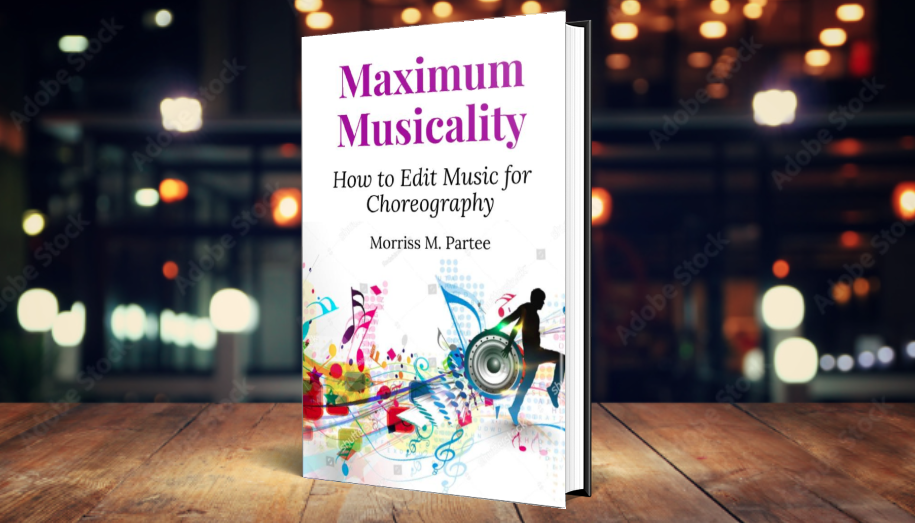 It’s pretty amazing how much time, sweat, rehearsal, effort, and money goes into putting a competitive group dance routine on stage. I think it’s terrific and amazing that so many dance parents are able to give their kids the experience, discipline, camaraderie, and excitement of performing an intricate routine, complete with music, choreography, and costumes. While the kids on stage and the choreographers are the ones who get the medals and awards, really it should be the parents getting the awards for making it happen!
It’s pretty amazing how much time, sweat, rehearsal, effort, and money goes into putting a competitive group dance routine on stage. I think it’s terrific and amazing that so many dance parents are able to give their kids the experience, discipline, camaraderie, and excitement of performing an intricate routine, complete with music, choreography, and costumes. While the kids on stage and the choreographers are the ones who get the medals and awards, really it should be the parents getting the awards for making it happen!
One thing I am always surprised about is how often these amazing routines go on stage, and are performed at competitions, with less-than-perfect music. Often times the music for these routines have jarring clicks, jumps, awkward timings, and mis-matched phrasing. While competitive dance is not judged on the quality of the soundtrack, bad music edits can make counting and choreography more difficult for the dancers since musical phrases can wind up with nonsensical timings like 9.7 beats instead of 8!
It surprises me that so much music with significant issues winds up on the competitive stage when you consider how much time, energy, and money goes into each dance. After all, the music is the foundation of the dance, and great music serves as the inspiration both for the dance teacher/choreographer as well as the dancers themselves. There are some studios, such as Mather Dance Company in the L.A. area, that go so far as to have original music commissioned for them by professional recording artists. While understandably, that kind of budget is out of reach for many studios, working with a skilled music editor is quite reasonable, especially when you think about the finances that go into each competitive routine that is put on stage. After all, we wouldn’t dream of putting a dancer on stage with a wrecked costume, so why would be put them on stage with wrecked music?
So let’s take a quick look at the cost to put one competitive dance on the stage. Oftentimes a unique music remix can be created for $199 or less, so I will wrap up our analysis by looking at that music cost as a percentage of the total cost of putting a routine on stage.
To make this calculation, I’m going to use conservative estimates. For many studios, the costs might be much less, while at others, they might be far more. For this example, let’s use a group routine with 15 dancers. If each of those company dancers is paying an average of $180 per month in studio tuition, and is in a total of 8 competitive routines, then their combined total studio fee, on a per routine basis is: 15 kids x $180 x 10 months / 8 total routines = $3,375 combined cost per dance. No matter if a guest choreographer is brought in, or the studio’s own teacher creates the choreography, that takes considerable effort, so we’ll budget $500 for the choreography. Next, costumes can easily run $125 per, for competitive routines, so that is another $125 x 15 = $1,875. But we haven’t even gotten to entry fees, let alone hotel and food costs that dance parents incur. If a competitive routine is entered into three regionals and one nationals, the entry fees can easily be $40 per regional and $50 per national. That is 15 x ((40 x 3) + 50) = $2,550. We are up to $8,300 for the combined routine cost, and we haven’t figured hotel or travel expenses yet.
Let’s assume that one of the regionals is near enough to the studio to not require a hotel, and let’s use a conservative estimate that the other two regionals will require one hotel night, and that the nationals will require four hotel nights. That’s a total of six hotel nights, so our calculation is 15 families x 6 nights x $110 / 8 routines = $1237. Let’s just round up to $1300 when you figure in food on the road. We’re also going to assume that families don’t have to purchase air fare to get to Nationals.
So our total cost, to put one group competitive routine on stage in all competitions is $3375 studio time + $500 choreography + $1875 costumes + $2550 entry fees + $1300 hotel costs = $9,600. Now imagine spending even as much as $200 for a spectacular custom music remix. That $200 represents 2% of the total cost in putting the routine on stage. Some would say that that is money well worth it. But I might be slightly biased as a music professional. Even if it’s not worthwhile to spend $200 on the music for a competitive group routine, it’s still very much worthwhile to spend $40 on having smooth and seamless music edits handled by a professional.
